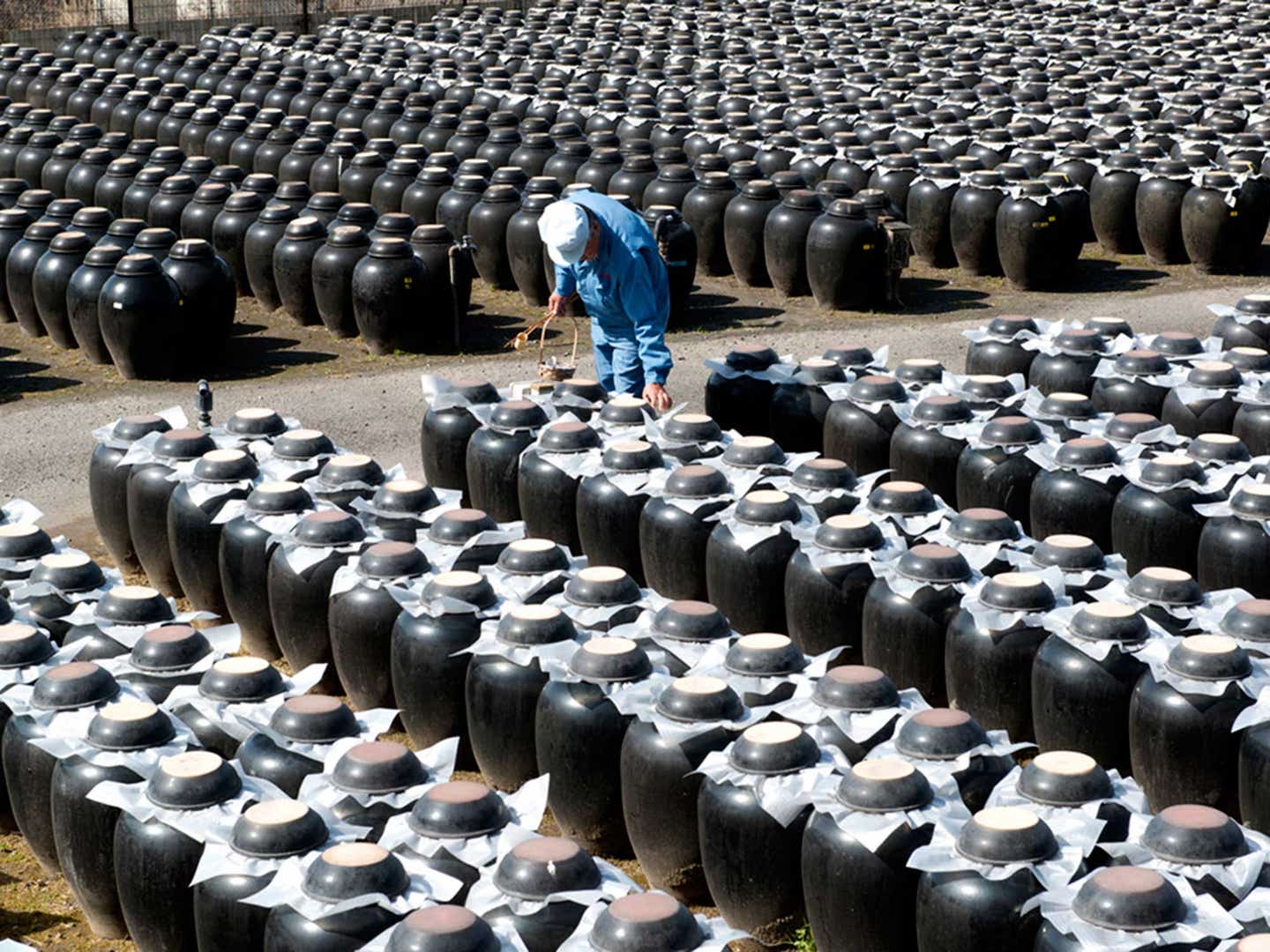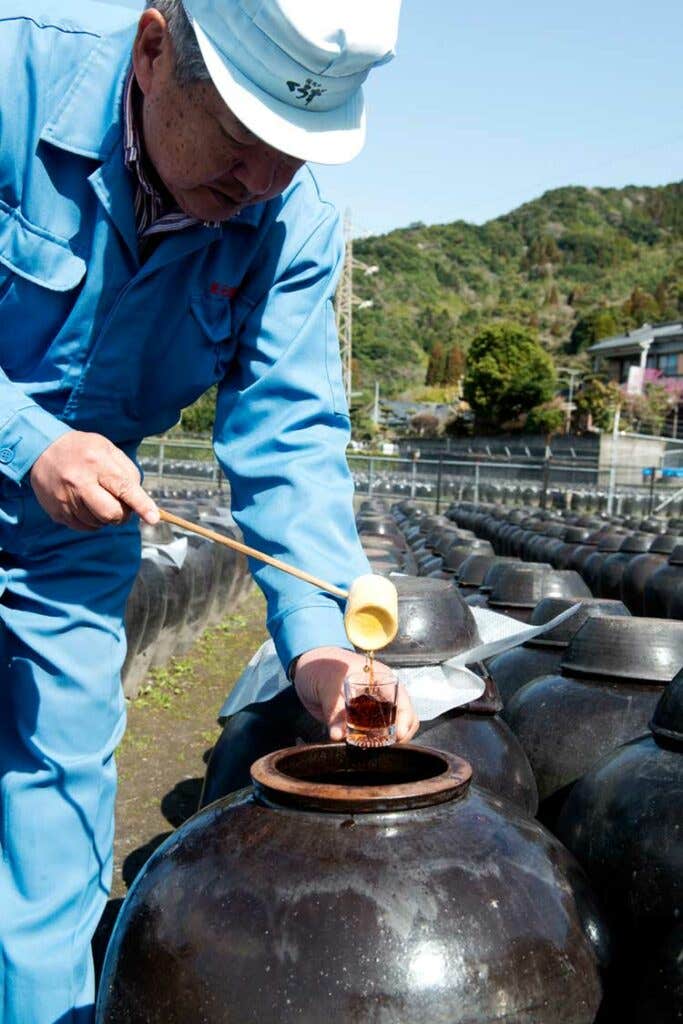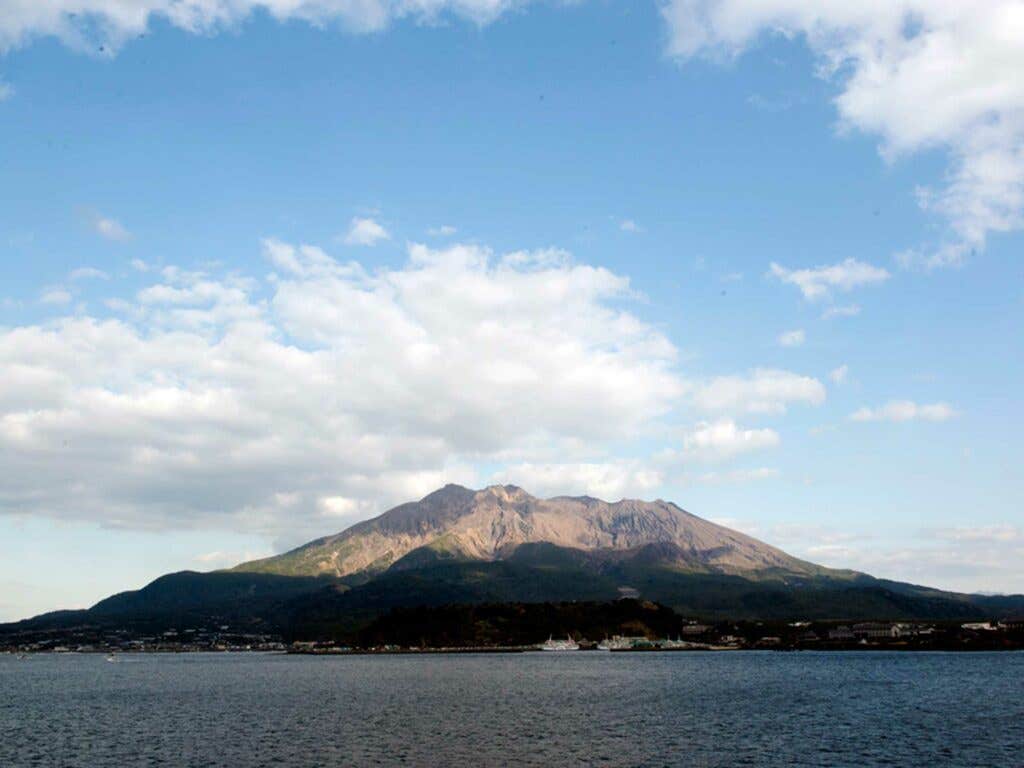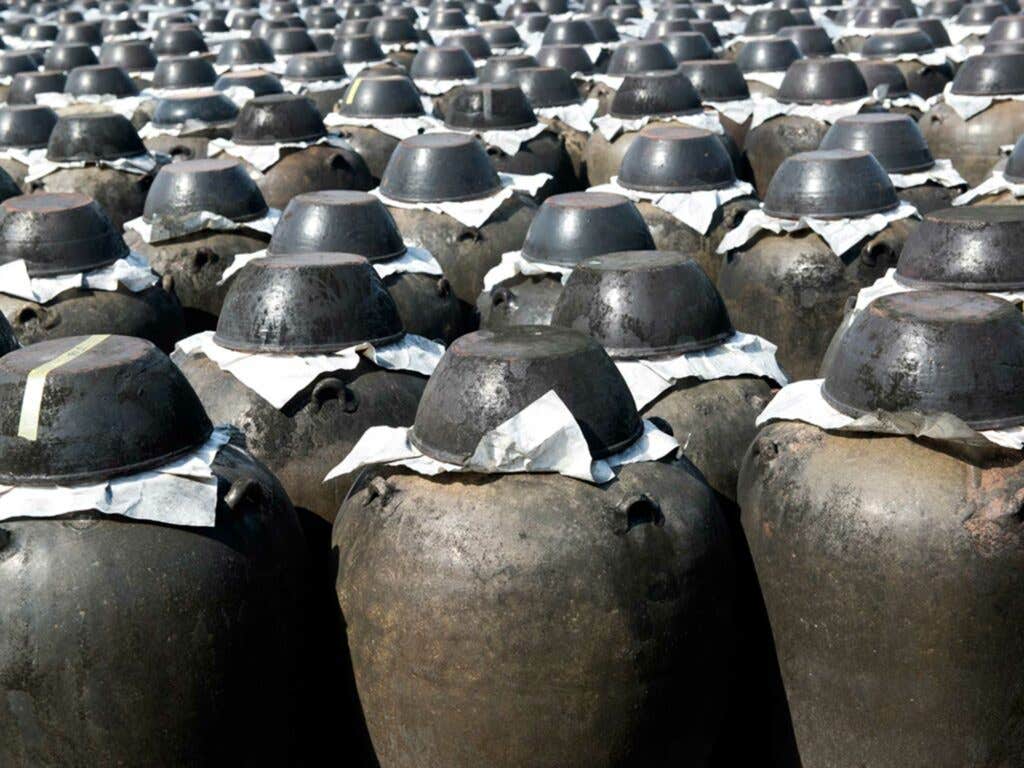
The Boutique Black Rice Vinegar That’s Aged Like Balsamic
Trekking to the source of Kirishima kurozu, the essential acid made in big clay crocks that lies at the heart of Japanese and Chinese cooking
In Kagoshima Bay, the very one where Godzilla fought SpaceGodzilla in the mid '90s, there sits an active volcano named Mount Sakurajima. Just north of this smoldering giant, a small town called Kirishima City is home to hundreds of thousands of tsubo, knee-high black ceramic jars that circumference of an embrace.
Situated in endless rows, they bask in the sun, slowly fermenting three simple ingredients: steamed rice, water and koji (the Aspergillus oryzae fungus which grows on rice and is used in sake making). Over time, the concoction goes through a non-interventionist transformation, barely stirred with bamboo sticks every so often by workers in clinical-looking powder blue uniforms.
Over the course of a few years, the liquid goes from a blonde to a burnt caramel color, ultimately resembling an aged whisky. It's only then that it can be called kurozu, which literally translates to "black vinegar." Busloads of Chinese tourists are called to the region by its parables of restorative health tonic.

Babylonians may have been the first to use vinegar for pickling and preserving purposes some 5,000 years ago, but contemporaneously during the Zhou Dynasty in China, vinegar found its way to the table as a condiment. The mahogany-hued liquid known as Chinkiang vinegar is named for the city of Zhenjiang on the Yangtze River near Shanghai. Universally referred to as “black vinegar,” at first glance it looks like soy sauce, and in the Chinese pantry is just as essential; valued like a brilliant balsamico, yet used for everyday dishes like hot and sour stir-fries.
To witness the profound and multifaceted personality of this distinct acid and its Japanese progeny, I took a seven-hour Shinkansen ride from Tokyo to Kagoshima, the southwesternmost city of Japan’s main islands, to visit the crocks face to face.

Kurozu tastes less acidic than traditional rice vinegars, with a more concentrated, almost earthy flavor and inky black color. It's also undeniably different from the black vinegars I've sampled from Chinese markets in America, which seem a bit watered down, not full-bodied enough to stand on their own, hence their side bowl status for dumpling dunking. It's great for big meaty braises and sticky rib glazes, as it has an inherent stewed or cooked quality.
Like its Italian balsamic brethren, kurozu comes in a range of ages. I've tasted some as old as seven years, which were slightly oxidized and almost tannic, still residually sweet with a soft acidic bite. The older ones have a complexity that I'd reserve for finishing dishes; younger versions are more suited for cooking.

The tasting rooms and gift shops at Kirishima City's Sakamoto Kurozu (the two-century-old grandfather of the region's black vinegar), and newcomer Kakuida, (recognized by its golden tsubo logo and photo-ready anime mascot at the entrance) are filled with everything black vinegar: jams, sports drinks, sucking candies. Most black vinegar makers also have onsite restaurants that are known for their sweet and sour recipes, which are more traditionally Chinese than Japanese, ranging from tangy noodle dishes to tart soups, almost always utilizing the local kurobuta black pig in some way.
My last morning there, I had kurozu miruku, a simple a glass of cold milk mixed with a shot of black vinegar that makes a refreshing sort of yogurt breakfast shake, along with a doughnut made to look like the volcano across the way. I ate them staring out my hotel window, waiting for a fictional sea monster to rise from the water.
Check out Michael Harlan Turkell's Acid Trip: Travels in the World of Vinegar in August.
Keep Reading
Continue to Next Story










